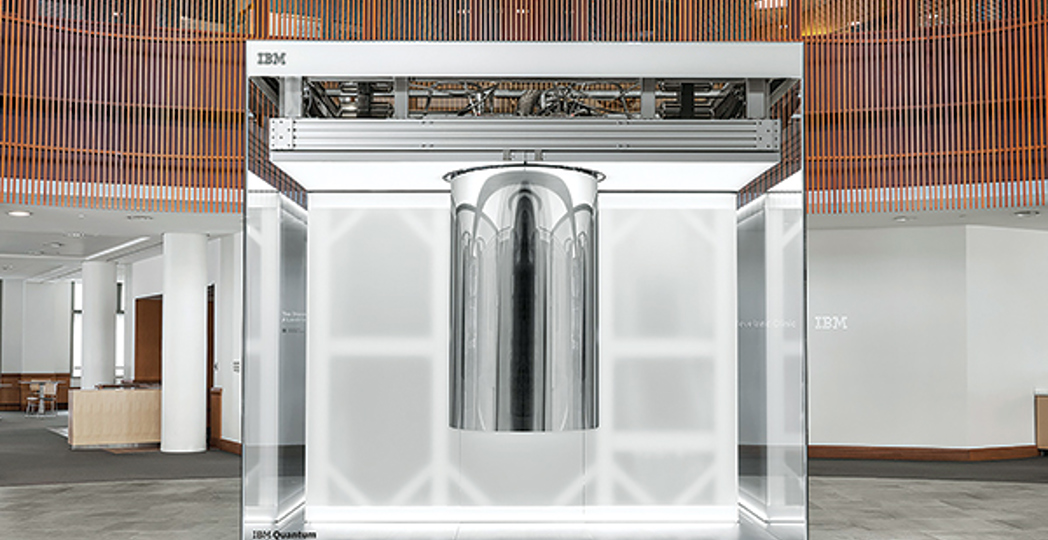For more updates about Cleveland, sign up for our Cleveland Magazine Daily newsletter, delivered to your inbox six times a week.
How the Cleveland Clinic's Quantum Computer Will Revolutionize Health Care: Future of CLE
The 10-year partnership with IBM is designed to advance the pace of biomedical research through artificial intelligence, quantum computing and high-performance computing by way of the hybrid cloud.
by Jacob DeSmit | Nov. 21, 2023 | 12:00 PM

Courtesy Cleveland Clinic
Consider this: You’re having a party and want to set different moods in different rooms. To get the optimal amount of mood lighting in each room, a dimmer is more useful than the standard “on” and “off” of a basic switch. With a dimmer in every room of the house, the lighting possibilities across all rooms are endless compared to a standard switch.
Offered by Dr. Lara Jehi of the Cleveland Clinic, the light switch example proves a surprisingly useful way to conceptualize the hospital’s IBM Quantum System One, the world’s first quantum computer specifically designed for health care research.
In this analogy, the simple light switch is like a bit, the most basic storage unit of a supercomputer, where information is stored as either 1 or 0. Meanwhile, the dimmer is similar to the quantum computer’s qubit, capable of storing information as both 1 and 0 simultaneously.
“If you had to sequence the genetic code of one individual and put it in a (super)computer, you need 1.5 gigabytes — that’s 1.5 billion bytes,” Jehi says. “If you wanted to store the genetic data of the human race of the living people on Earth, no supercomputer can do it. You can do this with a quantum computer with 68 qubits, and the one that we have in Cleveland Clinic now is 127 qubits.”
Located in the Cleveland Clinic’s Lerner Research Institute, the machine is accessible to the Clinic’s research team through the cloud. Roughly the size of a laptop, the computer must be housed in a 10-by-10-foot structure, in order to cool its mighty processor chip down to a temperature of absolute zero, akin to the cold of outer space.
The computer is a milestone of a 10-year partnership between IBM and the Cleveland Clinic, announced in 2021. The goal is to advance the pace of biomedical research through artificial intelligence, quantum computing and high-performance computing by way of the hybrid cloud.
SUGGESTED: 4 MEDICAL BREAKTHROUGHS HAPPENING NOW IN CLEVELAND
For now, the quantum computer is being used to improve research capabilities and pioneer technological advancements in medicine. For example, the processor can be used for quantum testing, which involves testing variations of a chemical formula for effectiveness. By cutting out the need to create each chemical variation in order to test, drug discovery research can be conducted more quickly and efficiently.
Jehi says she hopes that the Discovery Accelerator partnership results in research that the Clinic can share with the world and that finds actual solutions from quantum computing technology.
“The other dream that I have is that in 10 years from now, whenever the word quantum is uttered in the context of medicine anywhere in the world, Cleveland and Cleveland Clinic will be known as the epicenter of biomedical information using cutting-edge technology,” Jehi says.
From food to art to development, learn more about the Future of Cleveland.
Trending
-
1
-
2
-
3
-
4
-
5










